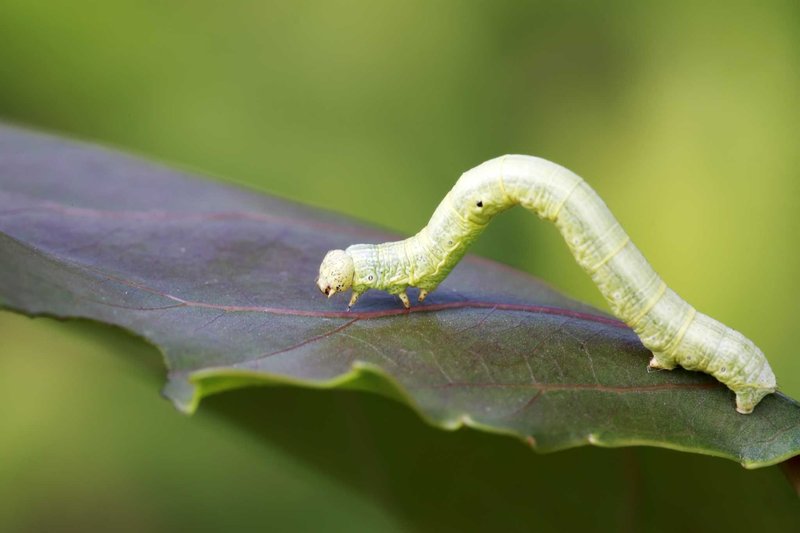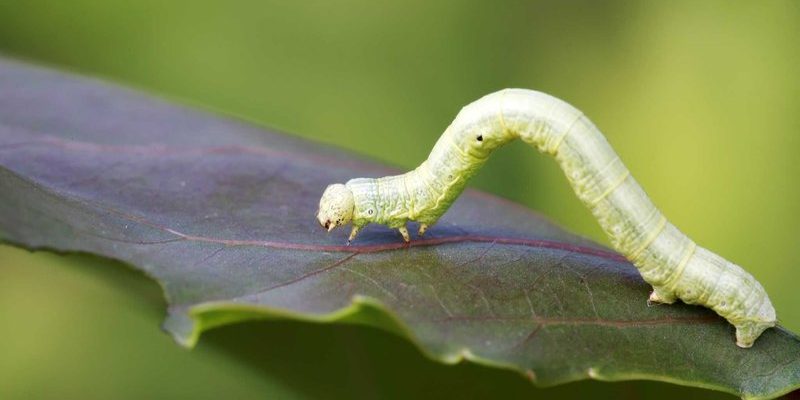
Inchworms, often found inching their way along branches and leaves, have a unique way of interacting with their environment. It’s almost like watching a slow-motion dance, but when it comes to their territory, things can get a bit more intense. They might not march around waving flags, but they do have behaviors that hint at a sense of ownership over their little world. This can be especially intriguing when you think about how these small beings navigate their surroundings while avoiding predators and competing for resources.
Understanding Inchworm Behavior
To understand whether inchworms display territorial behavior, we first need to unpack how they live. Inchworms are part of the Geometridae family, and they are known for their unique looping motion. When they crawl, they pull their bodies together to create that distinctive ‘inching’ movement. While they seem simple, these caterpillars have developed strategies to survive and thrive in their habitats.
In their quest for survival, inchworms often choose specific plants to feed on, which might lead you to think they have some sense of ownership over their chosen food sources. They usually select a few specific types of plants, often depending on the species of inchworm. For instance, the larvae of some types prefer oak trees, while others might lean towards apple or cherry trees. This plant selection could suggest that inchworms do, in fact, establish a sort of claim on these areas.
Another interesting aspect is their method of avoiding predators. Inchworms often camouflage themselves against the bark or leaves, making them look like a part of the plant. This behavior might not scream “territorial,” but it’s essential for their survival. By blending into their surroundings, they deter potential threats, which means they must have some awareness of their environment—and that’s where the discussion of territory begins.
The Concept of Territory in Inchworms
Now that we’ve established how inchworms live and interact with plants, let’s dig into what **territory** truly means for these caterpillars. Territory generally refers to an area that an animal actively defends against others of the same species or competitors. For inchworms, this concept may not align perfectly with larger animals that fiercely protect their domains. Instead, they approach territory more subtly.
Inchworms tend to occupy specific areas that provide food, shelter, and safety. They don’t chase away others like some animals do, but their selection of preferred plants can indicate a sort of passive territoriality. When they find a good feeding spot, they’ll stick close to it, making it their home base while they munch on leaves. Think about it this way: if you found the perfect seat in a café, you might not want anyone else to sit there while you enjoy your coffee.
Interestingly, some studies suggest that inchworms do exhibit **territorial behavior** when it comes to competing for food or mates. They may, at times, display aggressive behavior towards others encroaching their space, even if it’s subtle. A study observing the interactions between inchworms found that, while they don’t engage in full-blown battles, they do sometimes push or nudge other inchworms away from their chosen leaves. This behavior hints at a level of awareness regarding their surroundings and indicates that they’re not entirely passive about their space.
How Environmental Factors Influence Behavior
The environment plays a significant role in how inchworms behave. Factors like availability of food, weather conditions, and the presence of predators can all affect their habits. For instance, when food is plentiful, inchworms may seem less aggressive as they have less to compete for. However, during lean times, competition could spark more noticeable territorial behaviors.
When you think about it, this is a natural response seen in many species. Animals, big or small, will act differently based on their surroundings. Inchworms may become more protective of their feeding areas when resources are scarce, leading to some mild territorial interactions. For example, if a few inchworms are feeding on a single branch, one of them might assert itself by inching closer to the food source, making it clear that it’s not willing to share.
Weather can also influence inchworm behavior. During harsh conditions, inchworms may retreat to more sheltered spots, which could become temporary territories. Their ability to adapt to environmental challenges shows a level of awareness not often credited to these small creatures. When you notice them inching along, remember that their behavior is not just about getting from point A to point B; it’s about finding a safe space to thrive.
Comparing Inchworms to Other Caterpillars
When discussing territorial behavior, it’s useful to compare inchworms with other caterpillar species. Not all caterpillars exhibit the same behaviors, and some are far more territorial than others. For example, some **sphinx moth caterpillars** actively defend their feeding grounds and will engage in combat if another caterpillar tries to invade their territory. This kind of aggression is much rarer in inchworms.
What makes inchworms unique is their passive approach to territory. They don’t go out of their way to confront others aggressively. Instead, they rely on stealth and camouflage. It’s like playing a game of hide-and-seek. While some caterpillars are out there making a show of their space, inchworms prefer to blend in and wait until they’re safe before munching on the leaves they claim as their own.
While inchworms might not be the most aggressive when it comes to territory, their behaviors provide insight into how they survive in a world full of threats. Each caterpillar has its strategy, and inchworms’ unique way of interacting with their environment shows that they indeed have their techniques for survival, even if they aren’t as overtly territorial as their peers.
Inchworms may not fit the traditional mold of territorial creatures, but they do have their own way of claiming space. Their choice of plants, camouflage tactics, and occasionally aggressive interactions with other inchworms give us a glimpse into their survival strategies. It’s a fascinating aspect of nature that reminds us of the complexity found in even the tiniest creatures.
So, do inchworms display territorial behavior? The answer isn’t a straightforward yes or no. They exhibit a subtler form of territoriality based on food availability and environmental factors. The next time you spot an inchworm inching along a branch, take a moment to appreciate its tiny claim to that space, and remember that there’s much more to these little critters than meets the eye.

